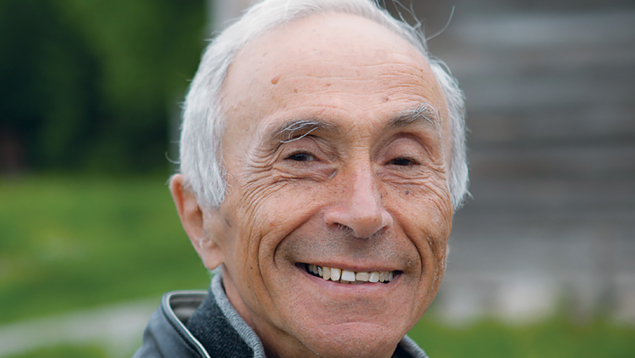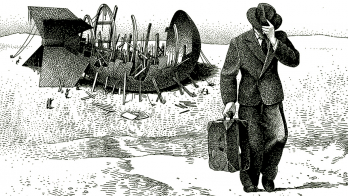
Renowned Soviet/Russian theorist Iosif Khriplovich passed away on 26 September 2024, aged 87. Born in 1937 in Ukraine to a Jewish family, he graduated from Kiev University and moved to the newly built Academgorodok in Siberia. From 1959 to 2014 he was a prominent member of the theory department at the Budker Institute of Nuclear Physics. He combined his research with teaching at Novosibirsk University, where he also held a professorship in 1983–2009. In 2014 he moved to St. Petersburg to take up a professorial position at Petersburg University and was a corresponding member of the Russian Academy of Sciences from 2000.
In a paper published in 1969, Khriplovich was the first to discover the phenomenon of anti-screening in the SU(2) Yang–Mills theory by calculating the first loop correction to the charge renormalisation. This immediately translates into the crucial first coefficient (–22/3) of the Gell-Mann–Low function and asymptotic freedom of the theory.
Regretfully, Khriplovich did not follow this interpretation of his result even after the key SLAC experiment on deep inelastic scattering and its subsequent partonic interpretation by Feynman. The honour of the discovery of asymptotic freedom in QCD went to three authors of papers published in 1973, who seemingly did not know of Khriplovich’s calculations.
In the early 1970s, Khriplovich’s interests turned to fundamental questions on the way towards the Standard Model. One was whether the electroweak theory is described by the Weinberg–Salam model, with neutral currents interacting via Z bosons, or the Georgi–Glashow model without them. While neutrino scattering on nucleons was soon confirmed, the electron interaction with nucleons was still unchecked. One practical way to find out was to use atomic spectroscopy to look for any mixing between states of opposite parity. Actively entering this area, Khriplovich and his students worked out quantitative predictions for the rotation of laser polarisation due to the weak interaction between electrons and nucleons. Their predictions were triumphantly confirmed in experiments, firstly by Barkov and Zolotorev at the Budker Institute. The same parity violating interaction was later observed at SLAC in 1978, proving the Z-exchange and the Weinberg–Salam model beyond any doubt. In 1973, together with Arkady Vainshtein, Khriplovich also derived the first solid limit on the mass of the charm quark that was unexpectedly discovered the following year.
He became engaged in Yang–Mills theories at a time when very few people were interested in them
The work of Khriplovich and his group significantly advanced the theory of many-electron atoms and contributed to the subsequent studies of the violation of fundamental symmetries in processes involving elementary particles, atoms, molecules and atomic nuclei. His students and later close collaborators, such as Victor Flambaum, Oleg Sushkov and Maxim Pospelov, grew as strong physicists who made important contributions to various subfields of theoretical physics. He was awarded the Silver Dirac Medal by the University of New South Wales (Sydney) and the Pomeranchuk Prize by the Institute of Theoretical and Experimental Physics (Moscow).
Yulik, as he was affectionately known, had his own style in physics. He was feisty and focused on issues where he could become a trailblazer, unafraid to cut relations with scientists of any rank if he felt their behaviour did not match his high ethical standards. This is why he became engaged in Yang–Mills theories at a time when very few people were interested in them. Yet, Yulik was always graceful and respectful in his interactions with others, and smiling, as we would like to remember him.








